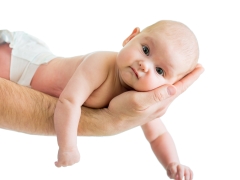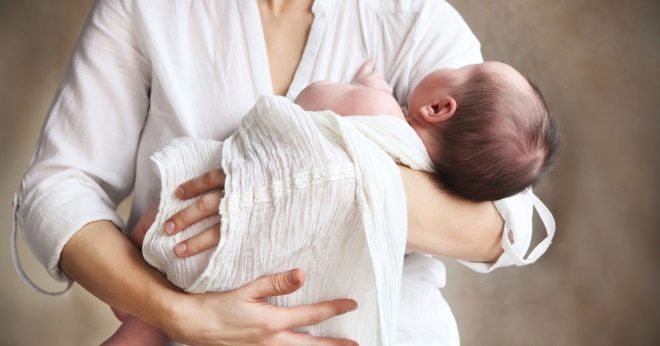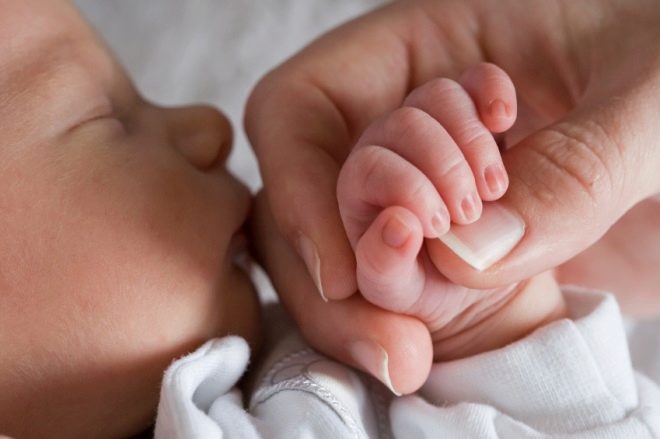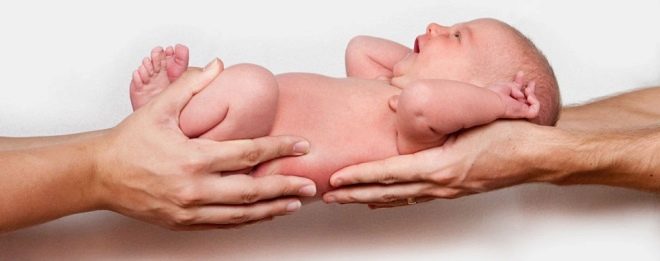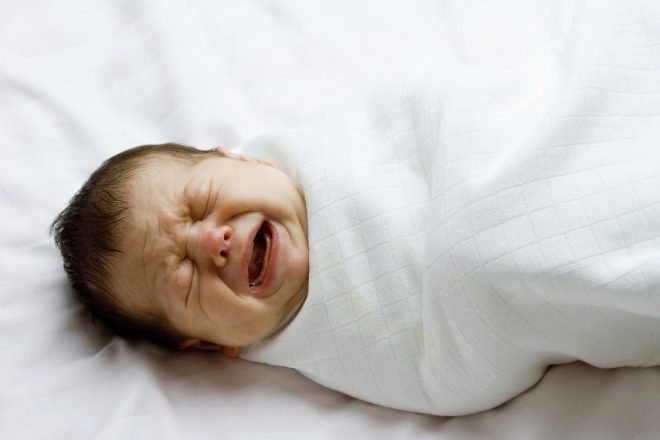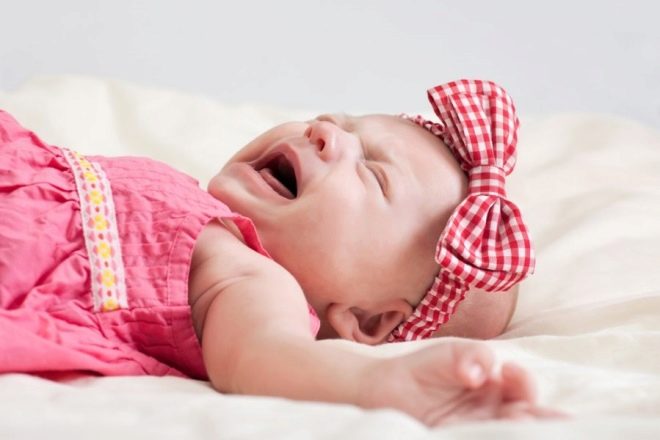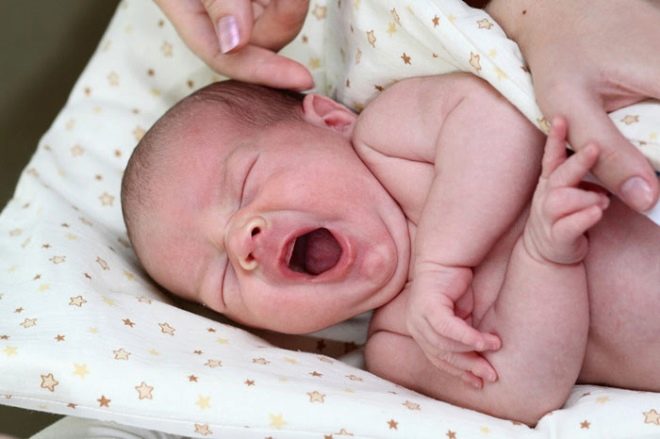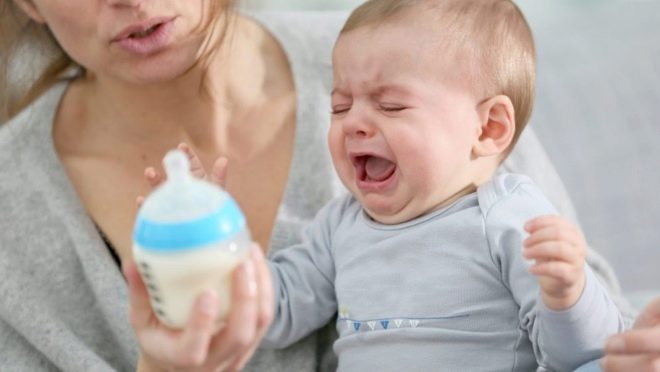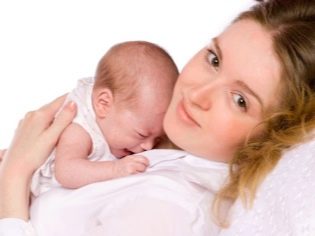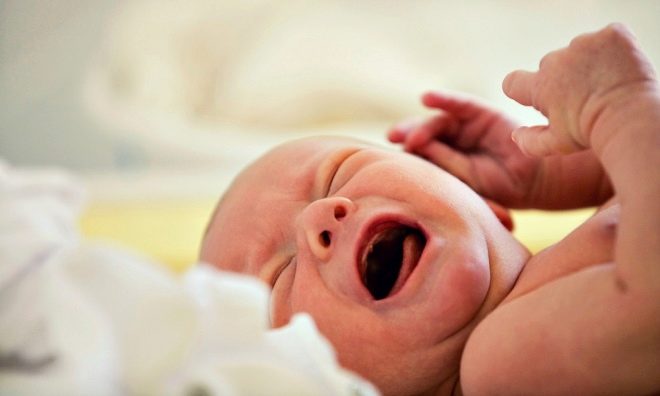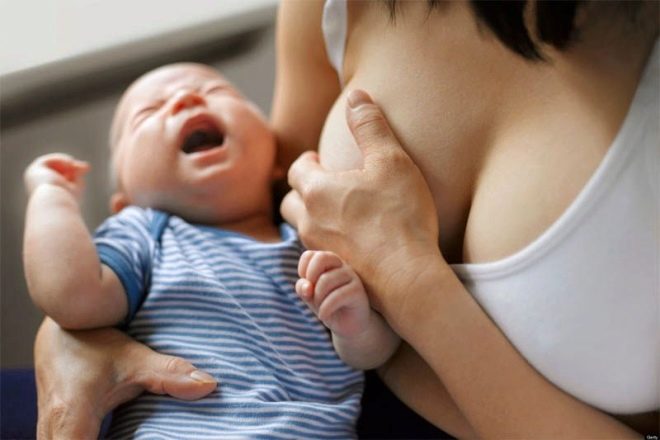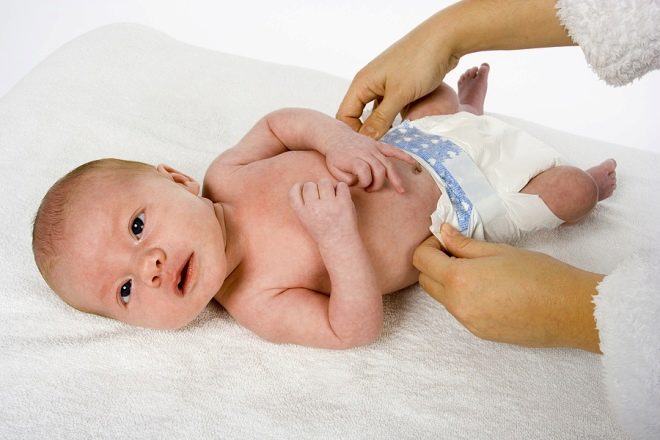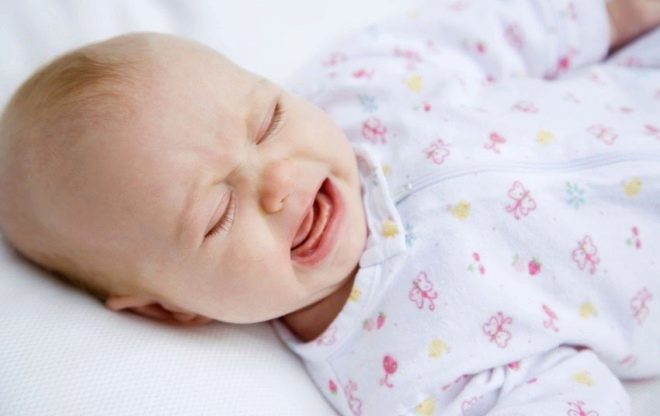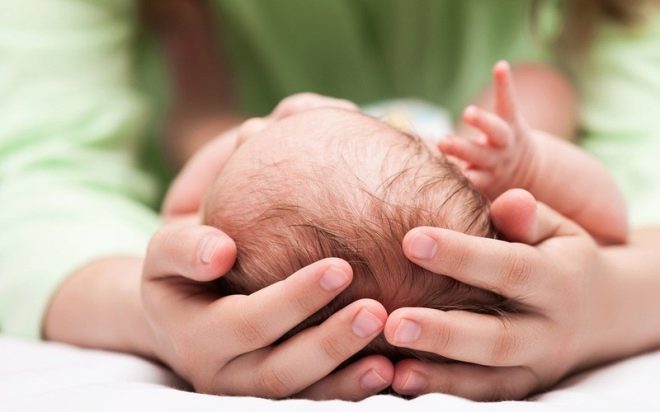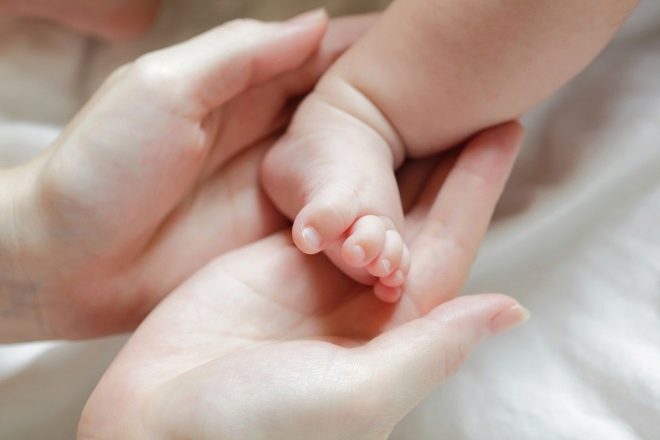Why do babies and babies cry often?
All little babies cry. Some do it rarely, others roar almost constantly with short breaks for sleep and food. Parents in this situation feel confused and powerless, because it is not always possible to quickly identify the cause of a baby crying. About why the newborn and the baby cries, we will tell in this material.
Crying - a way to communicate
The newborn and the baby, who still does not know how to talk, needs to cry as if it were a means of communication with the world. A loud roar is the only way for a child to express their displeasure, raise an alarm, and ask for help. And nature has foreseen everything in such a way that all newly-born people in this world perfectly know how to deal with such a formidable weapon as crying.
The first crying immediately after birth can tell a lot to an experienced neonatologist:
- Strong and confident roar baby says that the baby is full of strength, healthy, active.
- Lack of crying or quiet and languid squeak instead of loud crying - alarming symptoms that make doctors examine the crumb more closely in order to identify which pathologies prevent him from fully implementing the program set by nature.
Difficulties with the interpretation of the causes of crying and tears of a newborn from parents usually occur only in the first days and weeks after discharge from the maternity hospital. Then the mothers are sensitively caught in the cry of the child's special intonation, changing the volume, tone and mood. This allows them to gradually begin to understand their son or daughter without words, only through crying.
By itself, crying, from the point of view of medicine, is a psychophysical reaction to an external or internal irritant factor. The process of roaring is associated with changes in blood pressure, respiration. In babies, the airways are very narrow, and loud crying sometimes allows them to compensate for the lack of oxygen due to the strong pumping of the lungs.
Children, unlike adults, can cry without tears. And for all babies crying, among other things, is a reflex reaction to pain.
As one grows older, this reflex weakens and ceases to exist, like many other infant reflexes.
In medicine, it is customary to identify three main types of infant crying:
- main - as a means of communication;
- angry - as a way to give emotional coloring;
- pain - as a reflex manifestation of pain.
Normal crying from the point of view of physiology, the main features are characterized by pauses, blurring, smoothness of intonations.
With painful crying the child begins to scream sharply and piercingly before the full expiration, and then, after a convulsive short inhalation, the roar resumes.
Angry crying - a special intonated way to attract attention. The child can actively change his facial expressions, crying hysterically mainly on the exhale. Piercing notes to full expiration, as with pain, are not observed. Angry crying can be the longest of all types of children's ora.
Most medical publications and encyclopedias, considering the issue of infant crying, distinguish another type - manipulative crying. With it, kids who currently do not need to meet certain physiological needs, can achieve their own, what they want at the moment. He is always distinguished by some artificiality, the child does not take deep breaths and exhalations.
Crying happens and pathological and usually it is associated with serious disorders of the central nervous system, organic brain lesions.
There is such a thing as violent crying it is sometimes observed in patients with multiple sclerosis, pseudobulbar palsy. But such cases are very rare.
The most common causes
Understanding why the baby constantly cries is not so difficult if you know the main reasons for which it does. Loudly notify those around the infant for certain reasons:
Hunger
The strongest physiological factor that causes the child to scream. In this case, babies usually use the so-called angry crying. This is the most common cause of roaring. Due to the structural features of the digestive organs, newborns often eat little by little - their stomach is still very small. Any change in the amount of incoming food (usually down) causes violent protest in the child.
At the very beginning, if the child is hungry recently, the cry has a draft note. If the mother does not respond and there is no food, hungry crying becomes long and very emotional. People usually talk about it - crying excitedly or “rolling”.
To understand whether the baby is hungry, it is enough to put a finger to his cheek and tickle slightly. If he reacts to this by turning his head in the direction of the finger, opening the mouth, expressed “search” movements of the facial muscles, then there is no doubt that the child is definitely hungry. Usually, the op stops after the baby is fed. Frequent hungry crying is a reason to revise the diet of the baby. Perhaps he does not have enough mother's milk to completely satisfy his hunger.
The pediatrician who assesses the rate of growth, weight gaining the crumbs, and prompts you with the solution, will help you understand this question.
Thirst
This is another strong physiological factor of protest, since water is vital for a child. Babies who feed on breast milk are less likely to cry for thirst than artificial children. If the crumbs feed on mixtures, suck up a sufficient amount of nutrition by age, but still, noisy “marathons” are arranged between feedings, then thirst should be considered as the main reason.
It is easy to check the version - it’s enough to offer your child boiled warm water from a bottle or spoon. If the child calms down after drinking, the mother has no reason to worry. To distinguish crying from thirst from hungry crying is quite difficult, but possible.
He also has an angry temper, but, demanding water, the baby will not scream avidly, rather it will be more tedious and monotonous crying.
Pain
Painful sensations in a child cause reflex crying. In other words, crying occurs before the desire to cry appears. Painful crying is always sharp. The scream episode lasts until the expiration is complete, the child yells, as far as the lung volume is enough.
If the pain is expressed slightly, the pain is dull and prolonged in nature, then the crying becomes monotonous, aching, long and plaintive. It should be noted that various health problems cause a different nature of crying, more on this - below.
Fear, fear, psychological reasons
It only seems that the newborn does not understand anything around. In fact, babies from the first days of their independent life learn to feel and experience. As a result, the baby, who is only a week and a half old, is perfectly able to express boredom, fear, loneliness. Naturally, he will do all this with the help of crying.
As the gamma of emotions that will cause a cry and a tear to grow in a child, will increase - by 3-4 months the child begins to discern exactly who is with him and attached to his mom, may cry in his dad's arms. A crying child can accompany any mother’s leaving the house, as well as protesting against being left alone in the nursery.
Very often, this cry quickly acquires the nature of a manipulative.
The discomfort
Crying in a child can cause any violation of his ideas about a comfortable existence.
Wet or soiled diapers usually cause loud protesting crying, which does not stop even if you take the child in your arms. In any case, the child will roar up to the very replacement of the diaper.
Crying - plaintively and invitingly with sobs - the baby can from the cold, if it is cold or from the heat, if it is sweating.
Uncomfortable kids feel in situations where they receive increased attention from a large number of people. So, from overwork, in violation of the daily regimen, the baby can be capricious. Crying at the same time will be dull, dreary, somewhat monotonous, with a few pauses.
First of all, it is necessary to exclude the physiological causes of the children's roar. - hunger, thirst, discomfort. Calming the baby with such crying is simple enough - you have to feed the hungry, tired - put to sleep, wet - change clothes, frozen - warm.
If the baby is full, he was given a drink, dry diapers or a fresh diaper are on him, the room is not hot and not cold, but the crying continues, you need to think about the causes of pathological, associated with pain. And here there are so many options that it does not always make sense to understand the question yourself. Sometimes it's easier to call a doctor.
Pathological causes of crying
While eating
The roar in the process of eating can be associated with a variety of disorders. The most common cause is stuffy nose and disturbed nasal breathing. If the baby cannot inhale with his nose, then it will be difficult enough for him to suck. He will throw his chest or bottle, cry for a while, and then again willingly eat. Such a reason a mother can guess from the characteristic angry sniffle of her offspring.
The nose can be freed from the accumulated mucus with an aspirator, dripping vasoconstrictor drops. The problem will be solved.
When using vasoconstrictor drugs, the most important thing to remember is that they can cause persistent drug addiction, so you should always consult with your doctor.
A baby may cry during feeding because of otitis. In children, the auditory tube is quite interesting - it is shorter and more horizontal, and therefore the nasal mucus and fluids easily penetrate into it. This makes otitis media one of the most common diseases at an early age.
When inflammation of the middle ear babies cry quite characteristic. First - from hunger, and when they are offered a breast or a mixture, then, barely starting to suck, they throw and fill with a piercing cry. The fact is that while committing sucking movements, the pain in the ear increases.
You can help the child, making sure to begin with, that the reason for crying is in otitis. If it is easy to press with a finger on the trestle (hryashchik before breathing into the auricle), then a child with ear inflammation will react sharply to such an action - the pain will intensify, crying too. If such a test gives a positive result, it is imperative to call the doctor and get an appointment - drops in the ear, possible recommendations on physical procedures.
Some problems in the oral cavity may also interfere with the child's normal eating. For example, stomatitis. Anxiety and crying in this case will not be harsh and shrill in nature, rather, the crumb will whine, complaining of unpleasant sensations in the mouth during sucking. Examination of the mouth and gums of a child with clean hands, helping yourself with a small flashlight.If you find a so-called thrush in the mouth, as well as ulcers, you should definitely call a doctor and get an appointment for treatment.
A child may also cry while eating due to the fact that he does not like the taste of milk. For example, mother ate garlic or something hot, and taste buds in crumbs are very well developed.
With a shrill cry when eating, babies signal that air has entered the esophagus. This is possible if the baby swallows air when sucking, if the mother violates the technique of breastfeeding, as well as during artificial feeding.
For children with artifacts, you need to use high-quality, special anti-color nipples and make sure that the baby does not swallow air. You can cope with such crying, easing the child's condition. To do this, the child is turned into a vertical position and lightly tapped on the back so that the excess swallowed air is released. After belching, usually the baby’s pressure sensation in the stomach and esophagus disappears, crying stops.
If none of the above reasons is present, and crying while eating is permanent, then you should definitely show the child to the doctor to examine the condition of his gastrointestinal tract in order to rule out serious pathologies, including congenital malformations.
After meal
Creek after a meal can say that the child is tortured infant colic. Such a phenomenon usually accompanies the first 3-4 months of a baby’s life. Due to the imperfection of the digestive system, possible overfeeding, in the intestines of the child gaziki accumulate, which put pressure on the intestinal walls. The baby cries loudly and piercingly, presses the legs, shakes hands and feet.
A warm diaper, ironed and laid on the tummy, laid out on the stomach before eating, as it stimulates intestinal motility, as well as simethicone-based preparations - will help to alleviate the condition of the baby - “Bobotik», «Espumizan". It is useful to make the baby’s tummy massage in a circular motion clockwise.
This usually helps, but if there is no result, you should again consult a doctor to rule out intestinal problems.
In between meals
It happens that the baby wakes up before the time allowed for him and begins to cry. If he ate well at the previous feeding, then there is no point in offering him food, it will only lead to overfeeding. In addition, many babies, when not hungry, refuse to milk themselves.
The reason for such unplanned wake-ups may well be unpleasant sensations due to a wet diaper, tight swaddling, which restrains movement, and the hands of the baby numb. Cold or heat, too, prevent the crumbs from sleeping well. Fix it is pretty simple.
You need to ensure that the room was not higher than 20-21 degrees of heat, and the humidity was at the level of 50-70%. Diapers should be in size, not to reap and not hang out. Under them should not be diaper dermatitis, diaper rash, irritation.
An uncomfortable climate can cause crying attacks when changing clothes and changing a diaper.
If the room is too cold, then these actions give the kid pronounced discomfort. Allergic reaction also interferes with normal sleep. Any dermatitis, accompanied by skin rashes, causes itching, discomfort, to which the child reacts with crying. The cry itself in this case is in the nature of a mournful, quiet, anxious.
Inconvenient clothes, the seams of which irritate the delicate baby skin, are also a common cause of tiny tears. If the reason for crying lies in this, then after the baby is provided with comfortable seamless clothing from natural fabrics, the awakening and crying will stop.
During and after bathing
There can be several reasons for such a roar. First is the water temperature. It can be unpleasant for a child - too hot or too cold. It is best to adhere to the "gold standard" and warm the bathing water to 37 degrees.
Secondly, the cause of crying can be ordinary hunger, because many parents bathe the baby in the evening just before feeding.
In this case, it is worth reviewing the routine of evening exercise, and shifting bathing half an hour earlier, when the baby has not had time to get hungry much or half an hour later, when the eaten is absorbed and will not be pulled out during water procedures.
During the massage
Kids very often respond to massage with crying. If his mother does, then the roar during manipulations is less common. The invited massage therapist is a stranger to the child, his touch is not familiar to the little one, so they are not pleasant for him. A heart-rending cry during a massage may indicate that the pressing movements of the adult are carried out with excess force, the child simply hurt.
To continue the massage, if the baby cries, it is not necessary. This procedure is wellness, and it should be fun. It is worth waiting for the child to calm down and try again, replacing the pressure on the stroking movements, and the angry tone on the tender song.
Therapeutic massage, whose task is to correct well-defined pathologies (increased muscle tone is difficult to consider pathology, since it is characteristic of almost all newborns), always causes certain pain in problem joints and muscles, crying is more than appropriate here.
If there is no possibility to refuse the procedures, then you should just endure it.
In the evening at the same time
This is a very common problem in families where the baby grows. Many parents see colic in this wine. However, doctors are more inclined to another explanation of this phenomenon - emotional crying. A child was tired for the day, received new impressions, in the evening, as a rule, there are many events in his life - massage, bathing and air baths. That is why evening crying, this is how systematically repeated sobs are called, is a kind of emotional “release”, because babies also need to somehow get rid of their experiences.
In this case, the nature of the crying child can be any - some kids, tired, whining, others - shouting hysterically and burst into tears. If a child cries before bedtime, does not calm down when rocking, or calms down, but not for long, you just need to treat this with understanding. Usually the phenomenon passes without a trace after a couple of months, when the nervous system of the child gets a little stronger. If the problem is prolonged, it is worthwhile to show the baby to the neurologist, perhaps he will need to help with herbal sedatives, as well as herbal remedies.
With impressionable and loud in the evenings, babies need to walk more in the fresh air in the afternoon, let them throw out emotions.
During urination or defecation
A child who cries loudly and shrilly before urinating, immediately after this action, may well suffer from acute pain that accompanies cystitis and other problems of the genitourinary system. Be sure to pass the urine of the child for analysis and show the crumbs to the pediatrician.
If the child cries and strains, it is possible that he has problems with the chair, constipation. Usually, bowel movements should not cause discomfort to the baby. Scarce groans, but does not scream.
The appearance of crying and tears during bowel movements always indicates that the child has health problems. It is necessary to show the child to the pediatrician, as necessary, to make an ultrasound of the abdominal organs, to make sure that the child has no obstruction, twisting intestinal loops, that he does not have hernias.
Standing crying
A baby who cries most of the day and night must necessarily be thoroughly examined by a neurologist and a pediatrician.
Quite often the reason that the pussy wakes up every hour, arches its back and cries loudly, is increased intracranial pressure.
Respiratory prolonged or long monotonous (on one note) crying for no apparent reason can speak of dysfunctions of the central nervous system. In other words, the child is full, dry, comfortably dressed, he does not have constipation and abdominal distention, but the protest is taking place.
It is not necessary to assume that if a child's chin is shaking after crying, this is a mandatory neurological symptom. But it is also impossible to underestimate the additional warning signs.
The painful symptoms include a roar, which is combined with:
- motor impairment;
- violations of the position of the eye muscles;
- convulsions;
- intermittent breathing, in which the child wheezes between bouts of crying.
All of these conditions should be immediately examined by physicians. In some cases it is worth calling an ambulance.
How to learn to understand the baby?
In fact, it is not difficult at all. As soon as mom and dad get to know their crumbs better, get acquainted with his preferences, character, they will quite accurately be able to guess by the nature of crying that the child needs at one time or another.
Until the crumb has mastered the speech, one will have to put up with the fact that crying teeth and nausea and attention deficit will be accompanied by crying. One and all babies want to be loved and require communication.
If no physiological or pathological reason for crying is found, and the doctors just shrug, you need to reconsider your style of communication with the baby, ask yourself if enough crumbs are given attention and affection, love and care.
Newborns almost never cry without a good reason. But already in 2-3 months the child may well show his mood, emotions, fears and fears. Parents should listen carefully to their child. This does not mean that the whole family should tiptoe and please the new family member. But to know the true causes of crying and to take certain measures that are consistent with the ideas of parents about parenting, can all adults.
Having learned to hear and understand the motives of the crying of one child, you should not think that you will be able to quickly understand the other child on the experience gained.
How many children - so many characters, but because the second child can invest in his roar completely different emotions.
Learn more about why newborns and babies cry, you will learn from the following video.
The reasons for crying babies tells in detail Dr. Komarovsky in the next video.
